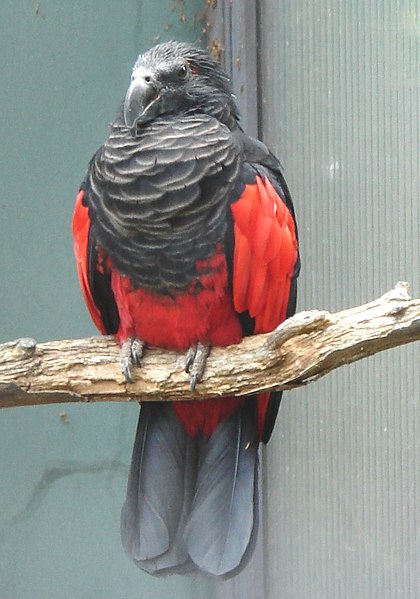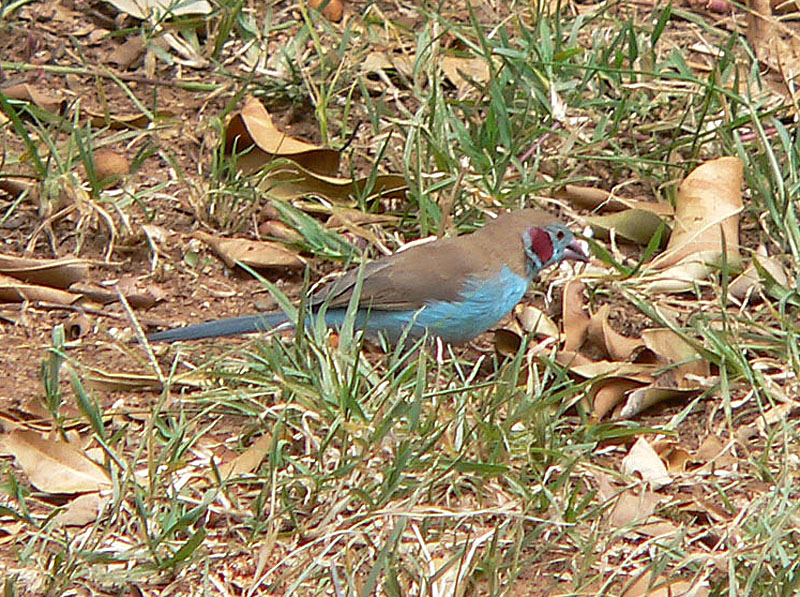You’re not likely to run into a Pesquet’s Parrot ( Psittrichas fulgidas) at your local pet store, as they are quite rarely kept even in zoos. Also known as the Vulturine or Vulture-headed Parrot, this bird is so unique that I just had to introduce it here.
Shockingly Odd!
 Having worked for a bird wholesaler during the heyday of parrot imports, I was well-acquainted with many unusual species by the time I first laid eyes on a Pesquet’s. I had even seen some of the relatively few photos of it that existed at the time. However, I was awestruck upon coming face to face with a group on my first day as bird keeper at the Bronx Zoo…photos did not do justice to this parrot oddity.
Having worked for a bird wholesaler during the heyday of parrot imports, I was well-acquainted with many unusual species by the time I first laid eyes on a Pesquet’s. I had even seen some of the relatively few photos of it that existed at the time. However, I was awestruck upon coming face to face with a group on my first day as bird keeper at the Bronx Zoo…photos did not do justice to this parrot oddity.
The head and throat are largely bare of feathers, and the beak thin and hooked – making the head look quite small for the 18-inch body. This imparts, as its alternative names suggest, the appearance of a somewhat offbeat vulture. But no vulture is clad in the jet black and brilliant red feathers of the Pesquet’s parrot. I also noticed that, rather than climbing about in typical parrot fashion, these characters hopped, flitting their wings as they went. I was left “aviculturaly disoriented”!
Diet-Driven Evolution
Diet seems to have guided the loss of head feathers in the true vultures and the Vulturine Parrots. Both feed on foods that could easily gum up and otherwise foul feathers – carrion in the case of vultures and figs in the case of their parrot namesakes.
Flower blossoms and nectar comprise the remainder of the diet of these highly specialized fig-eaters.
Range and Status
Pesquet’s Parrots are limited in range to mountainous rainforests in an area spanning the length of central New Guinea. Unlike most other resident parrots, they do not occur on any of the offshore islands.
Their feathers are sought after by certain indigenous peoples, and illegally collected chicks command astronomical prices. This, along with logging in some areas, has led to their inclusion on Cites Appendix II and a designation of “Vulnerable” by the IUCN.
Please try to visit a zoo that exhibits this amazing bird – you’ll certainly leave with a better appreciation of the great diversity that exists among the world’s parrots.
Further Reading
You can read about the captive breeding of Pesquet’s Parrots here.
Pesquet’s Parrot image referenced from wikipedia and originally posted by Lohachata
 That Bird Blog – Bird Care and History for Pet Birds
That Bird Blog – Bird Care and History for Pet Birds

 Waxbills and their relatives are often the first finches aviculturists obtain after having gained experience with the hardier zebra or society finches. The black-headed munia and several others are well suited to this role – slightly more sensitive than Zebra Finches, yet robust enough to fare well when given proper care.
Waxbills and their relatives are often the first finches aviculturists obtain after having gained experience with the hardier zebra or society finches. The black-headed munia and several others are well suited to this role – slightly more sensitive than Zebra Finches, yet robust enough to fare well when given proper care. Waxbills, nuns and munias are best housed in large
Waxbills, nuns and munias are best housed in large  upon the species, pigeons and doves should be provided with pellets, whole wheat bread, chopped kale and other greens and fruit.
upon the species, pigeons and doves should be provided with pellets, whole wheat bread, chopped kale and other greens and fruit.